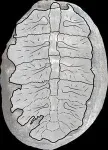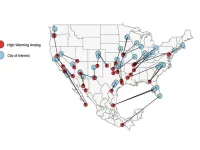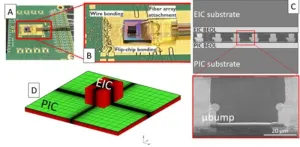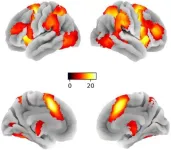(Press-News.org) When temperatures drop and roads get slick, rock salt is an important safety precaution used by individuals, businesses, and local and state governments to keep walkers, cyclists, and drivers safe. However, according to a new scientific review paper from a team of researchers at Virginia Tech and the University of Maryland, the human demand for salt comes at a cost to the environment.
Published in the journal Nature Reviews Earth & Environment with researchers Stanley Grant, Megan Rippy, and Shantanu Bhide from Virginia Tech’s Occoquan Watershed Monitoring Laboratory, findings revealed that human activities are making Earth’s air, soil and freshwater saltier, which could pose an existential threat if current trends continue.
“This is a slow-moving train wreck,” said Megan Rippy, assistant professor in civil and environmental engineering. “It’s playing out so slowly that it’s easy to overlook that our streams, lakes, and drinking water resources are becoming progressively saltier.”
Distrupting the natural salt cycle
Salts are compounds with positively charged cations and negatively charged anions, with some of the most abundant ones being calcium, magnesium, potassium, and sulfate ions. When dislodged in higher doses, these ions can cause environmental problems by impairing water supply for humans and wildlife. The study conducted at the Occoquan Watershed Monitoring Laboratory considered a variety of salt ions that are found underground and in surface water.
Although geologic and hydrologic processes bring salts to Earth’s surface over time, human activities such as mining and land development are rapidly accelerating the natural “salt cycle.” Agriculture, construction, water and road treatment, and other industrial activities can also intensify salinization, which harms biodiversity and makes drinking water unsafe in extreme cases. This research is establishing for the first time that humans affect the concentration and cycling of salt on a global, interconnected scale.
“Ecosystems are finely tuned to a certain level of salinity, and as that increases over time it can lead to big impacts, for example loss of important species, including fish. That applies to humans too. Too much salt in irrigation water can cause crops to fail, and salt in drinking water supplies has been linked to human health effects like preeclampsia. This is happening in the U.S. and around the world,” said Rippy.
Over the course of the study, Rippy, Grant, Bhide and University of Maryland researchers showed that human-caused salinization affected approximately 2.5 billion acres of soil around the world — an area about the size of the United States. Salt ions also increased in streams and rivers over the last 50 years, coinciding with an increase in the global use and production of salts.
Salt has even infiltrated the air. In some regions, lakes are drying up and sending plumes of saline dust into the atmosphere. In areas that experience snow, road salts can become aerosolized, creating sodium and chloride particulate matter, which lowers air quality and can be detrimental to wildlife and crops.
“One way that humans are upsetting the natural salt cycle is through our use of rock salt for deicing roads and parking lots in the winter,” said Bhide.
Finding new deicing methods
Stanley Grant, director of the Occoquan Watershed Monitoring Laboratory, said road salts have an outsized impact in the U.S., which churns out 44 billion pounds of the deicing agent each year. Road salts represented 44 percent of U.S. salt consumption from 2013-17, and they account for 13.9 percent of the total dissolved solids that enter streams across the country. This can cause a “substantial” concentration of salt in watersheds, according to the paper. To prevent U.S. waterways from being inundated with salt in the coming years, policies limiting road salts or encouraging alternatives can be beneficial, the researchers said. Washington, D.C., and several other U.S. cities have started treating frigid roads with beet juice, which has the same effect but contains significantly less salt.
“There’s a lot of interest in how we can change the way roads are maintained in the winter to reduce road salt use and its impacts on ecosystems and drinking water supplies,” said Bhide. “It’s a tricky issue, because deicing roads also reduces traffic accidents and saves lives.”
Salinization is also associated with “cascading” effects. For example, saline dust can accelerate the melting of snow, which can harm communities — particularly in the western United States — that rely on snow for water supplies. Because of their structure, salt ions can bind to contaminants in soils and sediments, forming “chemical cocktails” that circulate in the environment and have detrimental effects. These significant environmental and health implications are creating a need for a more sustainable approach to salt usage.
“History is littered with ancient civilizations that collapsed because they couldn’t balance their salt budget. I’m hoping this article will raise awareness and lead to action on this issue, so that history doesn’t repeat itself,” said Grant.
END
Less ice on the road leads to more salt in the soil, air, and water
Human activities, such as deicing roads, are disrupting the natural salt cycle on a global scale. A team of Virginia Tech researchers seeks to mitigate the existential threat by slowing salinization down.
2023-12-07
ELSE PRESS RELEASES FROM THIS DATE:
Very early treatment of newborns with HIV could result in medication-free remission for many babies
2023-12-07
An unexpectedly high percentage of children, who were born with HIV and started treatment within 48 hours of life, exhibit biomarkers by 2 years of age that may make them eligible to test for medication-free remission, according to a multinational study published in Lancet HIV.
“Moving away from reliance on daily antiretroviral therapy (ART) to control HIV would be a huge improvement to the quality of life of these children,” said Protocol Co-Chair and senior author Ellen Chadwick, MD, former Director of Section ...
Sister climate cities, utility data predict future water, electricity demands
2023-12-07
UNIVERSITY PARK, Pa. – Modern-day Ciudad Mante, Mexico, could help Tampa, Florida, plan for shifting water and electricity demands due to climate change, according to an international team of researchers. Led by Renee Obringer, assistant professor of energy and mineral engineering at Penn State, the researchers used utilities data and climate analogs — contemporary cities with climates close to what other cities are predicted to experience in the future — to assess how climate change may impact residential water and electricity use across 46 cities in the United States.
Their computationally efficient model projected strong regional differences for future water and electricity ...
New target found for treatment of spinal muscular atrophy
2023-12-07
The lab of Yongchao C. Ma, PhD, at Stanley Manne Children’s Research Institute at Ann & Robert H. Lurie Children’s Hospital of Chicago uncovered a novel mechanism that leads to motor neuron degeneration in spinal muscular atrophy (SMA). This discovery offers a new target for treatment that overcomes important limitations of gene therapy and other current therapies for SMA.
SMA is a genetic disease that disrupts the nerve cells that control voluntary muscle movement. Symptoms of motor neuron degeneration could start at as early as 3 months of ...
Mass General Cancer Center researchers present key findings at American Society of Hematology (ASH) Meeting
2023-12-07
Investigators from the Mass General Cancer Center, a part of the Mass General Brigham healthcare system, will present research discoveries and outcomes from clinical trials at the 2023 American Society of Hematology (ASH) Annual Meeting, held December 9-12, 2023 in San Diego.
ASH brings together leading experts in classical and malignant blood diseases to share the latest breakthroughs, clinical studies and research impacting the field and patient care. Mass General Cancer Center researchers will cover a wide range of topics, including ...
Thermal impact of 3D stacking photonic and electronic chips
2023-12-07
Recent advancements in AI and more specifically large language models such as ChatGPT have put a strain on data centers. AI models require huge amounts of data to train, and in order to move data between the processing units and memory, efficient communication links become necessary. For long distance communication, fiber optics has already been the go-to solution for decades. For short distance intra-data center communication, the industry is now also starting to adopt fiber optics due to its great performance compared to classical electrical links. Recent technological developments now even enable the switch from electrical to optical interconnect for very small distances, ...
Protein found in brain linked to frontotemporal dementia
2023-12-07
INDIANAPOLIS—An international team of researchers including experts at the Indiana University School of Medicine has identified a protein found in the brains of people with frontotemporal dementia (FTD), discovering a new target for potential treatments for the disease.
According to the National Institutes of Health, FTD results from damage to neurons in the frontal and temporal lobes of the brain. People with this type of dementia typically present symptoms, including unusual behaviors, emotional problems, trouble communicating, difficulty with work or in some cases difficulty with walking, ...
CU's CellSight contributes light-sensitive retinal organoids and RPE cells to new AMD study
2023-12-07
A partnership between ophthalmology researchers at the University of Colorado School of Medicine and Johns Hopkins University expands the understanding of how oxidative stress contributes to the development of choroidal neovascularization (CNV) in patients with age-related macular degeneration (AMD).
To study the roles oxidative stress, a condition in which the body lacks antioxidants, and hypoxia play in the progression of AMD, Johns Hopkins University researchers turned to CellSight, the ocular stem cell and regeneration research program in the CU Department of Ophthalmology, for tools that allow researchers to explore specific conditions ...
Novel stem cell therapy using technology from mRNA COVID-19 vaccines may stimulate natural repair in treatment of chronic and acute liver disease
2023-12-07
BOSTON – Mortality related to end stage liver disease is ranked as the 12th most common cause of death in the U.S. Liver transplantation remains the only treatment for end stage liver disease, but there is a critical shortage of organ donors, necessitating a dire need for new forms of treatment.
New research from Boston Medical Center and Boston University Chobanian & Avedisian School of Medicine’s Center for Regenerative Medicine (CReM) found evidence that a novel stem cell treatment, using mRNA technology encapsulated into nanoparticles (LNP) that was ...
Unlocking brain secrets: New insights into how our minds control impulses
2023-12-07
Published in the 2023 Volume 3 issue of Psychoradiology a team of dedicated researchers from The University of Hong Kong and The University of Electronic Science and Technology of China has conclusively identified the right inferior frontal gyrus (rIFG) as a key input and causal regulator within the subcortical response inhibition nodes. This right-lateralized inhibitory control circuit, characterized by its significant intrinsic connectivity, highlights the crucial role of the rIFG in orchestrating top-down cortical-subcortical control, underscoring the intricate dynamics of brain function in response inhibition.
In ...
How the first contact of the virus influences the immune response to new SARS-CoV-2 variants
2023-12-07
Although SARS-CoV-2 is no longer a stranger to the immune system, new virus variants still pose a challenge. The working group led by Professor Dr Florian Klein, Director of the Institute of Virology at the University Hospital Cologne and the Faculty of Medicine, has now published two studies investigating how the antibody response to SARS-CoV-2 changes over time and how the immune system is preparing itself for new variants with clever strategies. The work has been published under the title ‘Enhanced ...
LAST 30 PRESS RELEASES:
Innovative techniques enable Italy’s first imaging of individual trapped atoms
KIER successfully develops Korea-made “calibration thermoelectric module” for measuring thermoelectric device performance
Diversifying US Midwest farming for stability and resilience
Emphasizing immigrants’ deservingness shifts attitudes
Japanese eels, climate change, and river temperature
Pusan National University researchers discover faster, smarter heat treatment for lightweight magnesium metals
China’s 2024 Gastroenterology Report: marked progress in endoscopy quality and disease management
Pusan National University researchers uncover scalable method for ultrahigh-resolution quantum dot displays
Researchers use robotics to find potential new antibiotic among hundreds of metal complexes
Gut bacteria changes at the earliest stages of inflammatory bowel disease
Scientists develop new way to “listen in” on the brain’s hidden language
Brain research: “Pulse generators” grow and shrink as memories are formed
For teens, any cannabis use may have impact on emotional health, academic performance
School meals could unlock major gains for human and planetary health
Menopause hormone therapy does not appear to impact dementia risk
Signature patterns of brain activity may help predict recovery from traumatic brain injury
Dresden study uncovers new key mechanism in cancer cells
New species are now being discovered faster than ever before, study suggests
Cannabis-based products show limited short-term benefit for chronic pain, with increased risk of adverse effects
Cannabis products with more THC slightly reduce pain but cause more side effects
Clearing the brain of aging cells could aid epilepsy and reduce seizures
Brain injuries linked with potential risk of suicide, new study finds
New technique lights up where drugs go in the body, cell by cell
New study finds movement of fishing fleets can reveal shifts in marine ecosystems
Embargoed: New evidence points to potential treatment for vascular dementia
Study uncovers disrupted brain balance in alcohol dependence
Working in groups can help Republicans and Democrats agree on controversial content moderation online
Structural findings reveal how distinct GPCR ligands create different levels of activation
Anything-goes “anyons” may be at the root of surprising quantum experiments
UC review: Maximizing workplace opportunity for veterans
[Press-News.org] Less ice on the road leads to more salt in the soil, air, and waterHuman activities, such as deicing roads, are disrupting the natural salt cycle on a global scale. A team of Virginia Tech researchers seeks to mitigate the existential threat by slowing salinization down.




